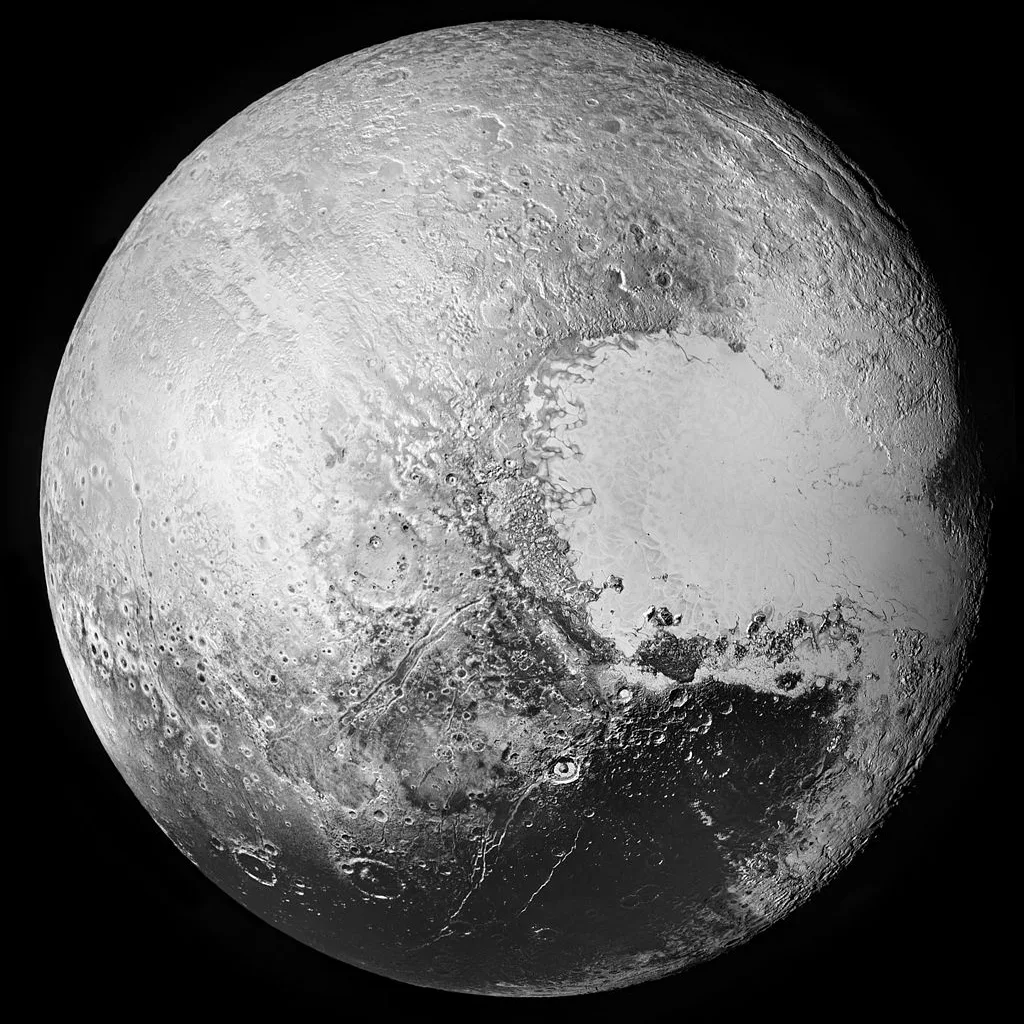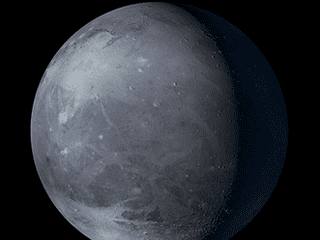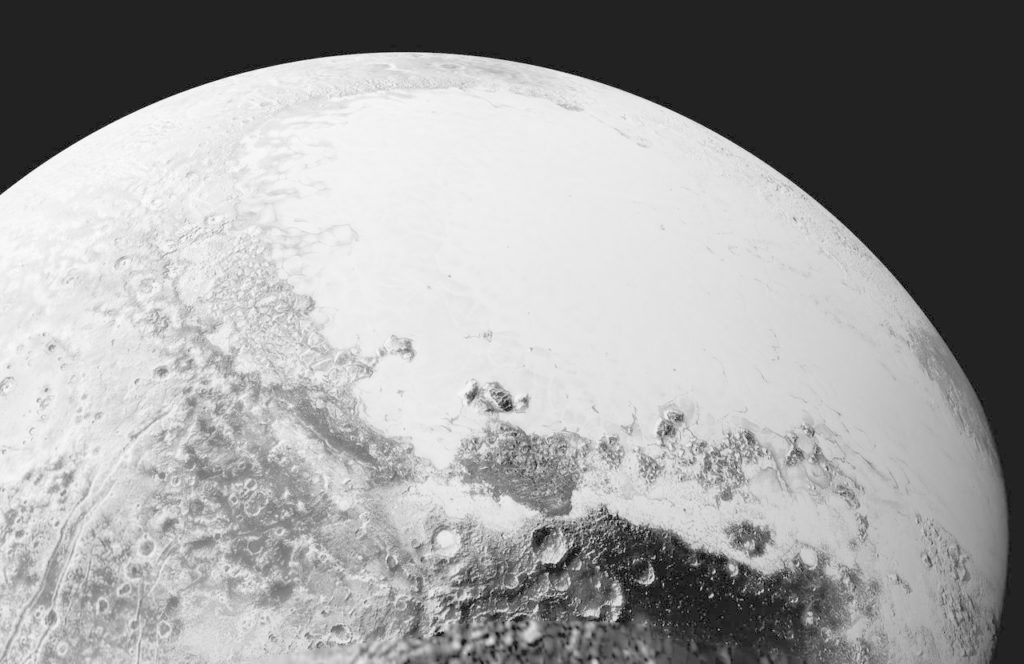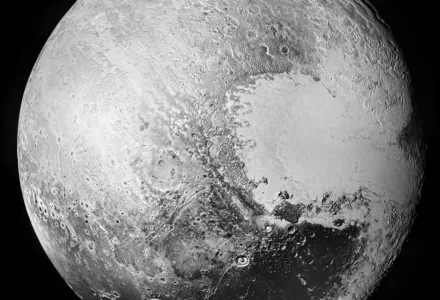Pluto Time: Pluto, a dwarf planet residing at the edge of our solar system, has always held a special place in our cosmic curiosity. Its distant orbit, icy landscapes, and status as a former ninth planet have fueled our fascination for years. But have you ever heard of “Pluto Time”?
Pluto Time may not be a term you encounter daily, but it’s a captivating concept that invites us to explore the unique lighting conditions on Pluto. Imagine a moment when the sunlight on Pluto mimics the intensity of a sunny Earth noon. Even though we’re light-years away from ever setting foot on this distant world, understanding Pluto Time offers us a small taste of what life might be like there.
In this article, we’ll embark on a journey to uncover the science behind Pluto Time, compare its lighting nuances to our familiar Earthly conditions, delve into practical applications of this concept, and discover how you can experience your very own Pluto Time moments—right from the comfort of your own surroundings. So, let’s venture into the celestial realm of Pluto Time, illuminating its mysteries one photon at a time.
Understanding Pluto Time: The Science Behind It
Calculating Pluto Time: Shedding Light on Timing
“Pluto Time” reveals itself twice a day: right before sunrise and immediately after sunset. These specific instances offer a glimpse of how Pluto’s surface experiences lighting akin to Earth’s noon, despite the considerable distance that separates the two worlds.

The Inverse Square Law: How Light Changes with Distance when it reaches Pluto
Think of a flashlight’s beam—it weakens as you move away. This rule applies to Pluto’s lighting too. Because Pluto orbits about 40 times farther from the sun than Earth, its sunlight is notably dimmer. This law shapes the distinct lighting conditions on Pluto, resulting in a softer, more muted glow.
Sunlight’s Journey to Pluto: From Radiant Star to Subtle Gleam
Picture sunlight as a traveler from the sun to Pluto. On its journey, it traverses vast distances, gradually losing its intensity. By the time it reaches Pluto’s surface, it has transformed into a gentle, subdued radiance. This journey encapsulates the essence of Pluto Time—an ethereal and serene lighting phenomenon.
Fascinating Insights about Pluto
- Pluto resides in the Kuiper Belt and orbits around 3.67 billion miles (5.91 billion kilometers) away from the sun.
- Earth’s atmosphere plays a role in scattering sunlight during Pluto Time, resulting in similar lighting conditions to Pluto’s surface.
- Sunlight on Pluto’s surface at its “noon” is merely about 1/900th the strength of Earth’s sunlight.
- NASA‘s New Horizons spacecraft, launched in 2006, enriched our understanding of Pluto’s lighting dynamics.
As we understnad the scientific aspects of Pluto Time, we’re not only uncovering the intriguing interplay between light and distance, but also gaining insight into the fundamental cosmic forces that shape how we perceive distant celestial bodies. Our exploration continues as we delve into Pluto’s distinct lighting conditions, drawing parallels to our everyday experiences on Earth.
Table of Contents
Real-World Applications of Pluto Time
Enhancing Photography, Stargazing, and Space Enthusiasm
Understanding “Pluto Time” isn’t just about cosmic curiosity—it has real-world applications that touch the hearts of photographers, stargazers, and space aficionados alike. For these enthusiasts, the concept of Pluto Time opens doors to capturing unique moments and indulging in their passion for the cosmos.
Earthly Scenarios and the Parallel to Pluto Time
While we may not experience Pluto’s distance, similar lighting scenarios exist on Earth that share a kinship with Pluto Time. Think about the magic of dawn and dusk, when sunlight bathes the world in soft hues. These Earthly instances resonate with the concept of Pluto Time, offering a taste of its otherworldly lighting conditions.
Captivating Photography during Pluto Time
Pluto Time isn’t just a concept—it’s a phenomenon that inspires artistry. Photographers have harnessed this unique lighting to capture breathtaking scenes that bridge the gap between our world and Pluto’s icy landscapes. The interplay of soft light and shadows during Pluto Time lends an ethereal quality to these images, offering a glimpse into the allure of the dwarf planet.
Examples of Photographs During Pluto Time:
- A city skyline bathed in the soft glow of pre-dawn or post-sunset lighting, reminiscent of Pluto’s enchanting lighting.
- A solitary figure gazing at the night sky during twilight, mirroring the ambiance of Pluto Time.
- Landscapes transformed by the delicate play of light and shadows during Earth’s equivalent to Pluto Time.
How to Experience Pluto Time on Earth
Introducing NASA’s “Pluto Time” Calculator
Bringing the wonder of Pluto Time to your doorstep is easier than you might think, thanks to NASA’s innovative “Pluto Time” calculator. This interactive tool is designed to simulate the unique lighting conditions of Pluto right where you are. It’s a digital portal that bridges the gap between the distant dwarf planet and your immediate surroundings, allowing you to experience its ethereal lighting phenomenon firsthand.
Navigating the “Pluto Time” Calculator: A Step-by-Step Guide
Embarking on your personal Pluto Time experience is a breeze. Here’s a step-by-step guide to using NASA’s calculator:
- Visit the NASA “Pluto Time” calculator website.
- Enter your location details, including your city or precise coordinates.
- The calculator will reveal the specific times—right before sunrise and just after sunset—when Pluto Time graces your area. These are the moments when the lighting conditions resemble those on Pluto during its “noon.”
Share Your Journey with #PlutoTime
As you partake in your very own Pluto Time moments, we encourage you to share your experience with the world. Capture the serene lighting, the soft glow, and the unique ambiance that defines this cosmic phenomenon. Use the hashtag #PlutoTime when you share your photos and thoughts on social media platforms. Join a community of curious minds who have ventured into the captivating world of Pluto Time, bridging the gap between Earth and the distant dwarf planet.

Beyond Pluto: Insights into Other Celestial Bodies’ Lighting in our Solar System
Glimpses of Otherworldly Lighting
While Pluto’s unique lighting has captivated our attention, it’s just a peek into the fascinating lighting scenarios that exist across our solar system. Each celestial body boasts its own distinct interplay of light and darkness, offering insights into the diverse conditions that shape our cosmic neighbors.
A Comparative Look at Celestial Lighting in our Solar System
Let’s take a brief tour of the lighting conditions on different celestial bodies and how they stack up against Earth and Pluto:
Mercury: Lighting Conditions
As the closest planet to the Sun, Mercury basks in intense sunlight during its day, receiving about 10 times the solar energy that Earth does. With minimal atmosphere to scatter sunlight, its surface experiences extreme temperature fluctuations, swinging between blistering heat and frigid cold. Its rocky terrain reflects the intensity of sunlight, creating stark shadows that add to its rugged charm.
Venus: Lighting Conditions
Venus, shrouded in a thick and hazy atmosphere composed mainly of carbon dioxide, experiences a unique lighting scenario. Sunlight filters through the atmosphere, creating a diffused glow that casts uniform illumination across its surface. This diffusing effect creates muted shadows and a distinct lack of strong contrasts, giving Venus a tranquil yet otherworldly appearance.
Mars: Lighting Conditions
Mars, renowned for its rusty-hued landscapes, enjoys a daylight experience reminiscent of Earth’s. Its thin atmosphere allows sunlight to penetrate, though with a subtle reddish tint due to the scattering of blue light. This gives Mars a warm, almost sepia-toned ambiance. Sunsets and sunrises on the Red Planet paint the skies with soft shades of pink and gold, offering a visual treat to any Martian explorer.
Jupiter: Lighting Conditions
Jupiter, the colossal gas giant, is a world of dynamic lighting. Its vibrant cloud bands, driven by powerful atmospheric currents, create an ever-changing display of light and shadow. Turbulent storms, like the iconic Great Red Spot, add drama to Jupiter’s canvas. While solid-surfaced planets have stable landscapes, Jupiter’s atmospheric features dance and swirl, showcasing a lighting spectacle unlike any other.
Saturn: Lighting Conditions
Saturn’s unique feature is its magnificent ring system, casting intricate patterns of light and shadow across its atmosphere. The angle of the Sun relative to the rings creates mesmerizing shadows, accentuating their textures and composition. This interplay between light and shadow, combined with Saturn’s serene and subtle atmospheric hues, creates a visual symphony that captivates observers.

Titan (Saturn’s Moon): Lighting Conditions
Titan, Saturn’s largest moon, boasts an atmosphere denser than Earth’s. Sunlight filters through this thick atmosphere, creating a soft and gentle lighting akin to a hazy Earth dawn. Its surface is veiled in an orange haze, giving its landscapes an ethereal and dreamlike quality. The combination of soft lighting and the moon’s unique features makes Titan a realm of intriguing contrasts.
Also Read: The Curious Case of Planets That Spin the Wrong Way
Understanding the Cosmic Mosaic
As we compare these celestial lighting conditions, we gain a broader understanding of the exquisite diversity that exists beyond our planet. Each world tells a unique story, painted with its distinct palette of light and shadow. While Pluto’s lighting piques our curiosity, exploring the lighting tapestry of other celestial bodies showcases the kaleidoscope of experiences that our solar system holds.
The Fascination with Space Exploration and the Future
Curiosity Ignites the Cosmic Fire
Throughout history, humanity’s fascination with the unknown has propelled us to explore uncharted territories, from the depths of our oceans to the farthest reaches of our universe. The allure of space exploration is a testament to this innate curiosity—a curiosity that transcends borders and generations. The mysteries of distant worlds, the enigmatic beauty of celestial bodies, and the tantalizing possibility of encountering new life have fueled our collective imagination for centuries.
Advancing Beyond Our Horizon: The Ongoing Journey
As we stand on the cusp of technological breakthroughs, space exploration is poised to leap beyond the boundaries of our planet. Ongoing missions continue to reshape our understanding of the cosmos. Spacecraft like the James Webb Space Telescope promise to unveil the secrets of the universe’s early days, while rovers on Mars tirelessly explore the Red Planet’s surface, seeking signs of past or present life.
Advancements in propulsion, robotics, and AI are opening doors to ambitious missions to asteroids, the Moon, and beyond. The dream of sending humans to Mars is closer than ever, igniting a sense of anticipation that reverberates across the globe. As we unravel the cosmos’ intricacies, we’re also uncovering new technologies that promise to make interstellar travel a reality.
Nurturing the Spark: Staying Informed and Inspired
As we conclude this journey through Pluto Time, remember that your curiosity is a celestial torch that guides our species toward the stars. Continue to nourish this flame by staying informed about the latest developments in space exploration. Follow the missions, innovations, and discoveries that unveil the universe’s hidden wonders.
Engage with space-related communities, attend talks and events, and immerse yourself in the vast sea of knowledge available. In nurturing your interest, you’re contributing to the collective human endeavor of exploration—a journey that knows no bounds.
Conclusion: Embracing the Cosmic Mysteries Through Pluto Time
In the expanse of our solar system, Pluto stands as a distant sentinel—a world of intrigue and wonder that beckons us to explore the mysteries beyond. Through the concept of “Pluto Time,” we’ve embarked on a journey that transcends our physical limitations, allowing us to peer into the unique lighting conditions of this icy dwarf planet.
Also Read: Yes, We Are too Small in Universe but We are Special too
A Glimpse into Cosmic Light: Pluto Time’s Legacy
As we’ve delved into the science behind Pluto Time, we’ve unlocked the secrets of its ethereal illumination. The inverse square law has guided us through the cosmic dance of light and distance, revealing the delicate balance that shapes Pluto’s lighting. We’ve compared and contrasted the lighting conditions of various celestial bodies, unveiling a rich tapestry of experiences that color our solar system.
Embracing Curiosity, Navigating the Cosmos
Pluto Time isn’t just about Pluto—it’s a gateway to a universe of discovery. By experiencing the lighting reminiscent of Pluto’s noon, we’re reminded that the cosmos’ mysteries are within reach, waiting to be explored. Our journey has highlighted the practical applications of understanding such phenomena, from enhancing photography to inspiring the dreams of space enthusiasts.
Charting a Cosmic Path: Nurturing the Spark
As we bid adieu to Pluto Time, let us not forget that our curiosity is a beacon that guides us through the darkness of the unknown. The cosmos beckons us to continue nurturing our passion for exploration. Stay connected with educational resources, follow the latest advancements, and engage with the vibrant communities that share your cosmic intrigue.
Let us embrace our innate curiosity, for it is the catalyst that propels us toward the stars. Let’s remember that even though we may be born in an age of Earth-bound exploration, our imagination knows no bounds. So, let’s keep our eyes on the skies, continue to explore the universe’s mysteries, and share in the timeless wonder that is space.

